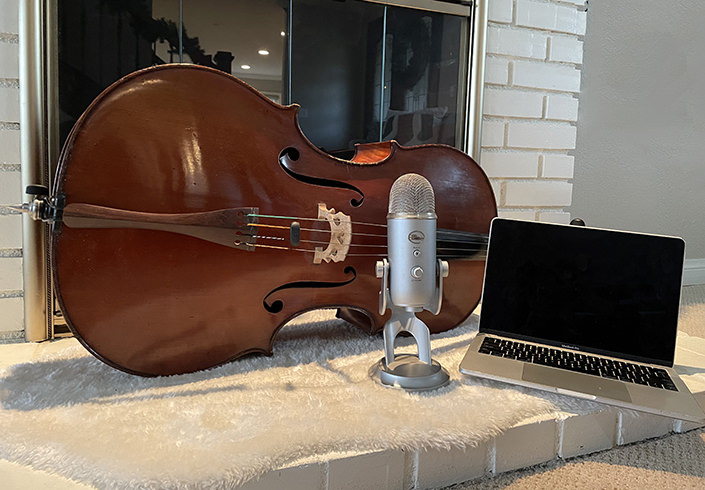By Annie Hyung
Dear Fellow Musicians,
When the pandemic first struck, faculty and students found themselves equally at a loss as to what the term “remote learning” could possibly entail, especially as musicians. We commonly associate the Northwestern experience with bright lecture halls filled with the pleasant hum of conversation, bustling performance venues ringing with music, and the constant scurry of students in and out of a labyrinth of practice rooms. All of a sudden, these previously instrumental aspects of our community were inaccessible, and in their place was the foreign construct of Zoom-dependent, online music education.
However, the past few months have brought upon much change; it turns out that, as much as humans are creatures of habit and routine, we are equally capable of adaptation to thrive within the limitations of our circumstances. After myriad “poor connection” notifications, unfortunate Zoom mishaps, and a dizzying tunnel of software updates, I am now able to proudly present some tips and tricks to facilitate a superior Zoom music experience.
These tips will (hopefully!) serve to help you in the process of remotely sharing music with one another until the day we’re all able to safely reconvene in person.
1. Test your technology in advance
Make sure ahead of the meeting (whether it be lesson, class, or audition) that the device you plan to use is charged, and you have earbuds or headphones prepared as necessary. If you’re using an external mic, it may be necessary to adjust audio input and output, as well as microphone gain, accordingly.
2. Ethernet, ethernet, ethernet
For the most reliable internet experience with minimal latency, plug in an ethernet cable to your preferred device for wired connection!
3. Check the camera angle
As trivial as it may seem, it is imperative as a musician that your Zoom audience is able to see your entire range of motion! For example, if you’re a string player, try to make sure your bow, instrument, and both hands are entirely visible at all times while you play.
4. Use the Zoom recording function
The Zoom recording function can be incredibly helpful; try recording yourself playing with your preferred setup in your personal Zoom meeting room. Then, by watching your own recording, you can get an idea of what your audience will be seeing and hearing, and adjust as needed.
5. Get to know the Zoom Setting Trio
Enable Original Sound, Disable Echo Cancellation, High Fidelity Music Mode. The combination of these three audio settings is a godsend in making Zoom sound much more accurate, with minimal enhancement.
With Love,
A Formerly Zoom-Challenged Musician
Annie Hyung is an undergraduate cello performance major at the Bienen School of Music.
